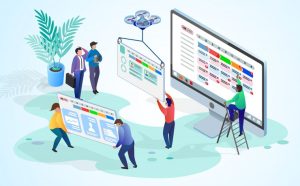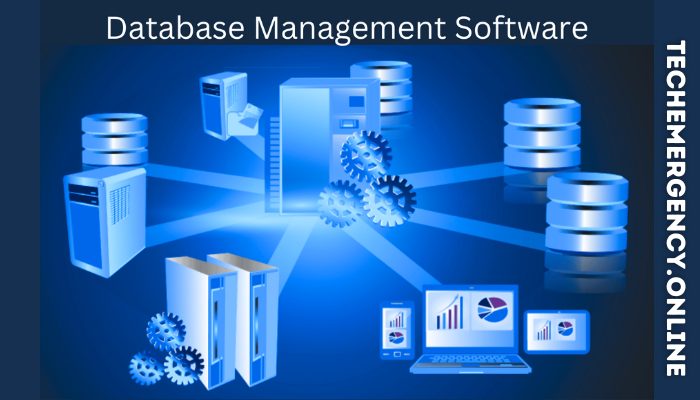Introduction
- Examine the significance of successful management in achieving in accomplishing objectives.
- Present venture the Project Management Software (PMS) as an instrument that smoothes out association, arranging, and joint effort.
- Notice the article’s motivation: to direct perusers on picking the best PMS for their novel requirements, zeroing in on different elements, advantages, and programming examinations.
1. Understanding Project Management Software (PMS)
- What is PMS?
- Define project management software, outlining its purpose and general functionality.
- Explain the sorts of undertaking the management software : Cloud-based, On-premises, Cross breed.
- Why is it Important?
- Stress how PMS can lessen inefficiencies, work with correspondence, and further develop task following and responsibility.
2. Key Factors to Consider When Choosing Project Management Software
- 1. Ease of Use
- Describe the importance of user-friendly interfaces.
- Mention the need for software that minimizes the learning curve, saving time and resources.
- 2. Scalability
- Explain why software that grows with the company is a smart investment.
- Mention specific scalability needs for different business sizes.
- 3. Integration Capabilities
- Discuss why integration with other tools (like CRM, email, and file-sharing) is crucial.
- Highlight compatibility with commonly used tools like Slack, Google Drive, and Microsoft Office.
- 4. Pricing and Affordability
- Explain the need to align software cost with budget, mentioning different pricing models (monthly, annual, one-time).
- Discuss the impact of choosing free vs. premium versions.
3. Types of Project Management Software
- 1. Task Management Software
- Overview of task-specific tools (e.g., Trello, Todoist) and their pros and cons.
- Best for teams focused primarily on task delegation and tracking.
- 2. Collaboration Software
- Software like Slack and Microsoft Teams that focus on real-time communication.
- Discuss strengths in team collaboration and limitations in detailed project planning.
4. Essential Features of Project Management Software
- 1. Task Assignment and Tracking
- Importance of easy task allocation and monitoring.
- Examples of visual task-tracking tools (Gantt charts, Kanban boards).
- 2. Timeline and Milestone Tracking
- Explain the significance of setting and tracking project milestones.
- Benefits of Gantt charts, roadmaps, and calendar views.
- 3. Team Collaboration Tools
- Importance of integrated chat, video conferencing, and file-sharing for team cohesion.
- Examples: Slack integration, real-time chat within the software.
- 4. Reporting and Analytics
- How reports help monitor performance, manage risks, and refine strategies.
- Features like time-tracking, task completion rates, and productivity metrics.

5. In-Depth Comparison of Popular Project Management Software
- 1. Asana
- Specifications: Task management, workflow automation, integrations with Slack, Zoom, Google Workspace.
- Pros: User-friendly interface, comprehensive task management, strong collaboration tools.
- Cons: Limited features in free version, can be complex for small teams.
- 2. Monday.com
- Specifications: Customizable workflows, time tracking, integrations with Slack and Microsoft Teams.
- Pros: Visual dashboard, easy-to-navigate interface, strong reporting tools.
- Cons: Limited advanced features in lower-tier plans, may require training for advanced functions.
- 3. Trello
- Specifications: Kanban-based task management, Power-Up integrations with Google Drive, Evernote.
- Pros: Easy to use, highly visual, good for task-oriented projects.
- Cons: Limited features outside Kanban boards, limited automation capabilities.
- 4. Wrike
- Specifications: Real-time collaboration, Gantt charts, time-tracking, integrations with Adobe Creative Cloud.
- Pros: Strong reporting tools, extensive project tracking, good for creative teams.
- Cons: Complex for beginners, can be expensive for small teams.
- 5. ClickUp
- Specifications: All-in-one tool with tasks, goals, time tracking, customizable views.
- Pros: Customizable, extensive integrations, cost-effective.
- Cons: Interface can feel cluttered, may require training for new users.
6.Benefits and Drawbacks of Using Project Management Software
- Benefits
- Improved organization and planning.
- Enhanced communication and collaboration.
- Real-time progress monitoring and reporting.
- Drawbacks
- Possible learning curve for complex software.
- Risk of over-relying on digital solutions.
- Cost considerations for premium options.
7.Industry-Specific Project Management Software Options
- 1. Construction: Procore, Buildertrend.
- 2. Marketing: Wrike, Monday.com.
- 3. IT and Software Development: Jira, GitHub.
- 4. Creative and Design: Asana, Wrike.
- Pros and Cons of selecting industry-specific software over general-purpose solutions.

8.Security and Privacy Considerations
- Data Security: Importance of data encryption and secure servers.
- User Permissions: The need for granular access control to protect sensitive information.
- Compliance: Consideration of industry-specific compliance needs (e.g., HIPAA, GDPR).
9.Choosing the Right Software for Your Team’s Needs
- 1. Define Project Scope and Complexity
- Importance of choosing software that matches the project’s scale and team’s needs.
- 2. Consider Team Size and Collaboration Requirements
- Matching software’s collaboration tools to team size and location.
- 3. Evaluate Software Trial Options
- Take advantage of free trials to test usability and features.
- 4. Consider Customer Support and Training Resources
- Importance of support for onboarding and troubleshooting.
10.Steps to Implementing Project Management Software Effectively
- 1. Onboard the Team: Tips for efficient onboarding and training.
- 2. Set Up Project Templates: Utilize templates to streamline processes.
- 3. Regular Check-ins: Encourage routine usage to track team adherence.
- 4. Review and Optimize Usage: Regular assessment to maximize benefits and resolve any challenges.
Conclusion
- Recap the importance of choosing the right project management software for improved efficiency and teamwork.
- Encourage readers to evaluate software based on their unique requirements, using factors like features, pricing, and ease of use.
- Reinforce that well-chosen PMS can be a powerful tool for scaling productivity and managing projects effectively.




